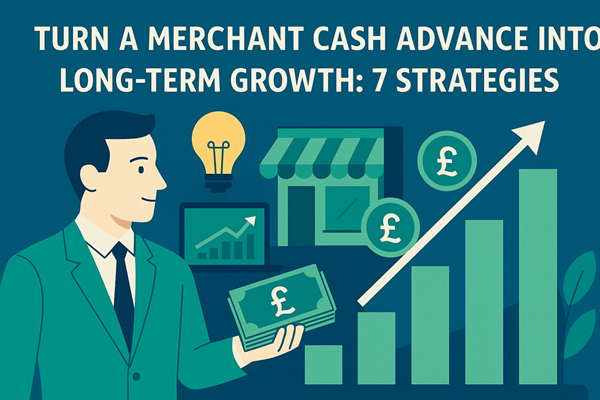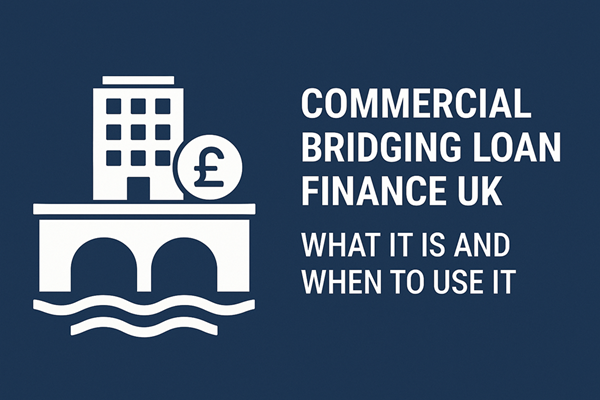When is the Best Time to Use a Bridging Loan?
In the fast-paced world of property transactions and financial planning, timing can be everything. Whether you’re a property investor, a homeowner, or a business owner, there are moments when you need immediate access to funds to seize an opportunity or avoid a financial setback. This is where a bridging loan can step in as a short-term, flexible solution. But when is the best time to use a bridging loan, and what should you know before diving in? This guide will explore the ins and outs of bridging loans, their ideal use cases, and the key factors to consider to ensure they work for you.
What is a bridging loan?
A bridging loan is a short-term loan designed to “bridge” a financial gap, typically in property transactions or situations requiring quick access to capital. These loans are usually repaid within a short period, ranging from a few weeks to 12 months, and they are often secured against property or other assets. Unlike traditional mortgages, bridging loans are faster to arrange, making them ideal for time-sensitive situations.
Bridging loans come in two main forms:
- Closed bridging loans: These have a fixed repayment date, often tied to a specific event, such as the sale of a property.
- Open bridging loans: These have no fixed repayment date but are typically repaid within a set timeframe, offering more flexibility.
Interest rates on bridging loans are generally higher than those on standard mortgages, reflecting their short-term nature and the speed of arrangement. Lenders may charge monthly interest rates (often 0.5% to 2%) and additional fees, such as arrangement or exit fees. Understanding the costs and repayment structure is crucial before committing.
When is the best time to use a bridging loan?
Bridging loans are not a one-size-fits-all solution, but they can be invaluable in specific scenarios. Below are the most common situations where a bridging loan might be the best option:
1. Breaking a property chain
Property chains, where a series of buyers and sellers depend on each other to complete transactions, can be fragile. If a sale falls through or delays occur, you might find yourself unable to proceed with your purchase. A bridging loan can provide the funds to complete your purchase while waiting for your existing property to sell.
Example: You’ve discovered your ideal home, yet your current property’s sale is experiencing a delay. A bridging loan allows you to secure the new property without losing it to another buyer, and the loan is repaid once your existing home is sold.
2. Buying at auction
Property auctions often require buyers to complete the purchase within a short timeframe, typically 28 days. Arranging a traditional mortgage within this period can be challenging. A bridging loan offers a quick way to secure the funds needed to complete the purchase, giving you time to arrange long-term financing or sell the property for a profit.
Example: You win a property at auction for £200,000 but need to pay within 28 days. A bridging loan covers the cost, allowing you to refurbish and sell the property or refinance it with a buy-to-let mortgage later.
3. Renovating or refurbishing a property
Property developers and investors often use bridging loans to fund renovations or refurbishments before selling or refinancing the property. These loans can cover the purchase price and renovation costs, enabling you to improve the property’s value.
Example: You purchase a run-down property for £150,000 and estimate £50,000 in renovation costs. A bridging loan of £200,000 covers both, and after refurbishment, you sell the property for £300,000, repaying the loan and pocketing the profit.
4. Securing a property before selling another
If you’re looking to buy a new home or investment property but haven’t yet sold your current one, a bridging loan can provide the funds to move forward. This is particularly useful in competitive markets where delaying could mean losing out on a desirable property.
Example: You’re upsizing to a larger family home but need to act quickly to secure it. A bridging loan covers the purchase, with the expectation that you’ll repay it once your current home sells.
5. Business cash flow needs
Bridging loans aren’t just for property transactions. Businesses facing short-term cash flow challenges, such as paying VAT bills, covering unexpected expenses, or seizing a time-sensitive opportunity, can use bridging loans secured against assets like commercial property.
Example: A business needs £100,000 to pay a VAT bill while awaiting a large client payment. A bridging loan provides the funds, repaid once the client settles their invoice.
6. Preventing repossession
If you’re at risk of losing a property due to missed mortgage payments or financial difficulties, a bridging loan can provide the funds to clear arrears or pay off the existing mortgage while you sell the property or secure alternative financing.
Example: You’ve fallen behind on mortgage payments, and your lender is threatening repossession. A bridging loan clears the arrears, giving you time to sell the property at market value rather than losing it.
7. Opportunistic investments
For investors, bridging loans can be a tool to seize time-sensitive opportunities, such as purchasing a distressed property at a discount or acquiring land for development. The speed of bridging loans makes them ideal for situations where hesitation could mean missing out.
Example: A developer spots a plot of land with planning permission at a bargain price. A bridging loan allows them to secure the land quickly, with plans to refinance or sell once development is complete.
Benefits of bridging loans
Bridging loans offer several advantages, particularly in time-critical situations:
- Speed: Bridging loans can be arranged in days, compared to weeks or months for traditional mortgages.
- Flexibility: They can be used for a wide range of purposes, from property purchases to business needs.
- Short-term solution: Ideal for temporary financial gaps, with repayment terms tailored to your plans.
- No early repayment penalties: Many bridging loans allow early repayment without penalties, reducing overall costs if you repay quickly.
Risks and considerations
While bridging loans can be a lifeline, they come with risks that require careful consideration:
- High interest rates: Monthly rates of 0.5% to 2% can add up quickly, especially if repayment is delayed.
- Additional fees: Arrangement fees, valuation fees, and exit fees can increase the overall cost.
- Repayment pressure: Bridging loans are short-term, so you need a clear exit strategy (e.g., property sale or refinancing) to avoid default.
- Risk to assets: As most bridging loans are secured against property, failure to repay could result in repossession.
- Not a long-term solution: Bridging loans are not a substitute for traditional mortgages or long-term financing.
Before taking out a bridging loan, ask yourself:
- Do I have a clear plan to repay the loan within the agreed timeframe?
- Can I afford the interest and fees, even if my plans are delayed?
- Have I explored all other financing options, such as remortgaging or personal loans?
How to choose a bridging loan
To ensure a bridging loan works for you, follow these steps:
- Assess your needs: Determine how much you need to borrow and for how long.
- Research lenders: Compare interest rates, fees, and terms from multiple lenders, including high-street banks, specialist lenders, and brokers.
- Understand the terms: Check whether the loan is open or closed, and clarify any fees or penalties.
- Plan your exit strategy: Ensure you have a reliable way to repay the loan, such as a property sale or refinancing.
- Seek professional advice: A financial advisor or mortgage broker can help you navigate the complexities and find the best deal.
Alternatives to bridging loans
Bridging loans aren’t always the best option. Depending on your situation, consider:
- Remortgaging: Releasing equity from an existing property may be cheaper in the long term.
- Personal or business loans: These may offer lower interest rates for smaller sums or non-property-related needs.
- Savings or investments: Using personal funds can avoid borrowing costs altogether.
- Buy-to-let mortgages: For property investors, these may be a more cost-effective long-term solution.
Conclusion
Bridging loans are a versatile tool for those needing quick access to funds, particularly in property transactions or time-sensitive financial situations. They shine in scenarios like breaking property chains, buying at auction, or funding renovations, offering speed and flexibility that traditional financing can’t match. However, their high costs and short repayment periods mean they’re not suitable for everyone.
By understanding your financial goals, assessing the risks, and planning a clear exit strategy, you can decide whether a bridging loan is the right choice. Always consult a financial advisor to ensure the loan aligns with your circumstances and long-term plans. When used wisely, a bridging loan can be the key to unlocking opportunities and navigating financial challenges with confidence.






